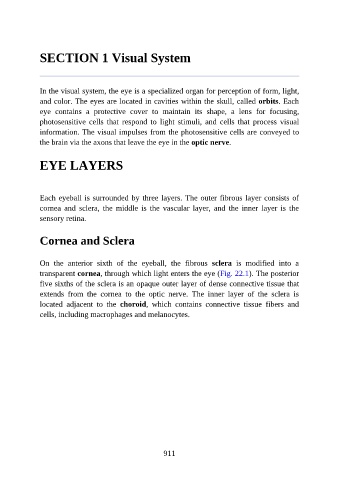Page 912 - Atlas of Histology with Functional Correlations
P. 912
SECTION 1 Visual System
In the visual system, the eye is a specialized organ for perception of form, light,
and color. The eyes are located in cavities within the skull, called orbits. Each
eye contains a protective cover to maintain its shape, a lens for focusing,
photosensitive cells that respond to light stimuli, and cells that process visual
information. The visual impulses from the photosensitive cells are conveyed to
the brain via the axons that leave the eye in the optic nerve.
EYE LAYERS
Each eyeball is surrounded by three layers. The outer fibrous layer consists of
cornea and sclera, the middle is the vascular layer, and the inner layer is the
sensory retina.
Cornea and Sclera
On the anterior sixth of the eyeball, the fibrous sclera is modified into a
transparent cornea, through which light enters the eye (Fig. 22.1). The posterior
five sixths of the sclera is an opaque outer layer of dense connective tissue that
extends from the cornea to the optic nerve. The inner layer of the sclera is
located adjacent to the choroid, which contains connective tissue fibers and
cells, including macrophages and melanocytes.
911

